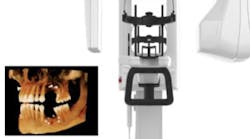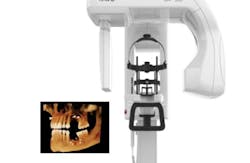3 tips for making difficult technology decisions for your dental practice
This article originally appeared in the Principles of Practice Management e-newsletter. Subscribe to this informative twice monthly practice management ENL here.
Purchasing new technology can feel as intoxicating as driving a flashy new sports car, and make your practice feel like it’s ahead of the curve. But it’s a decision that should be made with a business-first mindset, not because it’s flashy and interesting.
_____________________________________________________________________________________________________
Bringing a new technology, technique, or material into your dental office should have a positive effect. It can increase the predictability and efficiency of the procedure and result in a profitable outcome, as long as you’re charging an appropriate fee.
I use the acronym PEP, which stands for predictability, efficiency, and profitability, to assess any significant technology purchases. Generally speaking, the procedures that incorporate PEP will also be the procedures that our practice is good at and that are fun for us to do.
Three tips for selecting technology
Asking a set of simple questions, born out of PEP, when making new technology purchases will ensure your decisions are made for the right reasons. Use them to select the technology that best fits your practice model and environment.
For example, a practice may decide to purchase intraoral scanners. With the range of scanners on the market today, the differing price points, and the business models behind them, it’s important to look at the advantages and disadvantages of each one prior to the purchase.
1. How does it maintain or improve predictability?
By following a process, clinical predictability and confidence will rise, and the right technology can help it rise even higher. A dental office switching to an intraoral scanner wants to be sure that the new technique is going to be as good or better than its approach with polyether or polyvinyl impression materials.
There’s no question that scanning is as good if not better than traditional impressions. The technology allows for better evaluation by the dentist at the time of preparation and retraction, and many scanner systems allow us to evaluate proper reduction. The biggest variable is how the scanner feels in your hands. Many companies will place the equipment in your practice for a one- or two-day trial, which allows you to do a procedure and determine which model feels best to you.
2. How does it increase efficiency?
By design, technology should improve upon any manual processes and streamline tasks. If you can’t see how the technology would streamline tasks and processes, you should keep looking. For dental offices switching to an intraoral scanner, it’s worth it to investigate the differences in the software with each system. Some of the systems may be designed with a focus on crown and bridge procedures, while another may focus on providing clear aligner orthodontic treatment.
Go through the various software screens in an actual clinical situation so you and your staff can properly evaluate each system and understand the various workflows you want to use it for in your practice.
Make sure to invest in and commit to any training to learn to properly use the new technology. There is an adjustment period when implementing new technology. Give the entire practice an opportunity to adjust—often for several months—before analyzing whether the purchase meets your goals. With proper training, the technology will lead to more efficient and predictable results.
3. What is the return on investment, or profitability?
Profitability is a byproduct of combining predictability and efficiency. One of the factors to consider is the differing payment structures for purchasing technology. Some technologies come with a large upfront cost, but no per-use fee. Others come with a low upfront cost, but offices are charged by the use.
Look at the ways you plan to use the technology. Using the scanner example, look at the current costs to do those procedures. Consider how much you spend each month on polyvinyl impressions. Do you have a storage unit where you store all your models? If so, what is the monthly charge? With scanning, storage will eventually be unnecessary.
Consider these variables, sit down with your CPA, and figure out the financial option that best fits your situation. That way the return on the investment (ROI) will be planned from the beginning.
Predictability and confidence
Achieving predictability and confidence while making technology decisions will lead to efficiency and ROI that positively impact your practice. The Dawson Academy focuses on making predictable and confident decisions for patients, and that philosophy extends to business decisions. By using PEP, you can ensure that technology purchased will be put to use in your practice, and that it will provide a return.
John Cranham, DDS, PC, clinical director of the Dawson Academy, is a sought-after speaker who has taught more than 1,400 days of continuing education worldwide. He teaches many of the lectures and hand-on courses, maintains the relevancy of courses, and leads the Dawson Academy’s faculty members. He has published numerous articles on restorative dentistry, and coauthored “The Complete Dentist Manual” with Dr. Peter Dawson. He runs an esthetic-oriented practice in Chesapeake, Virginia, and he’s an active member of numerous professional organizations, including the American Dental Association, The American Academy of Cosmetic Dentistry, and The American Equilibration Society.






